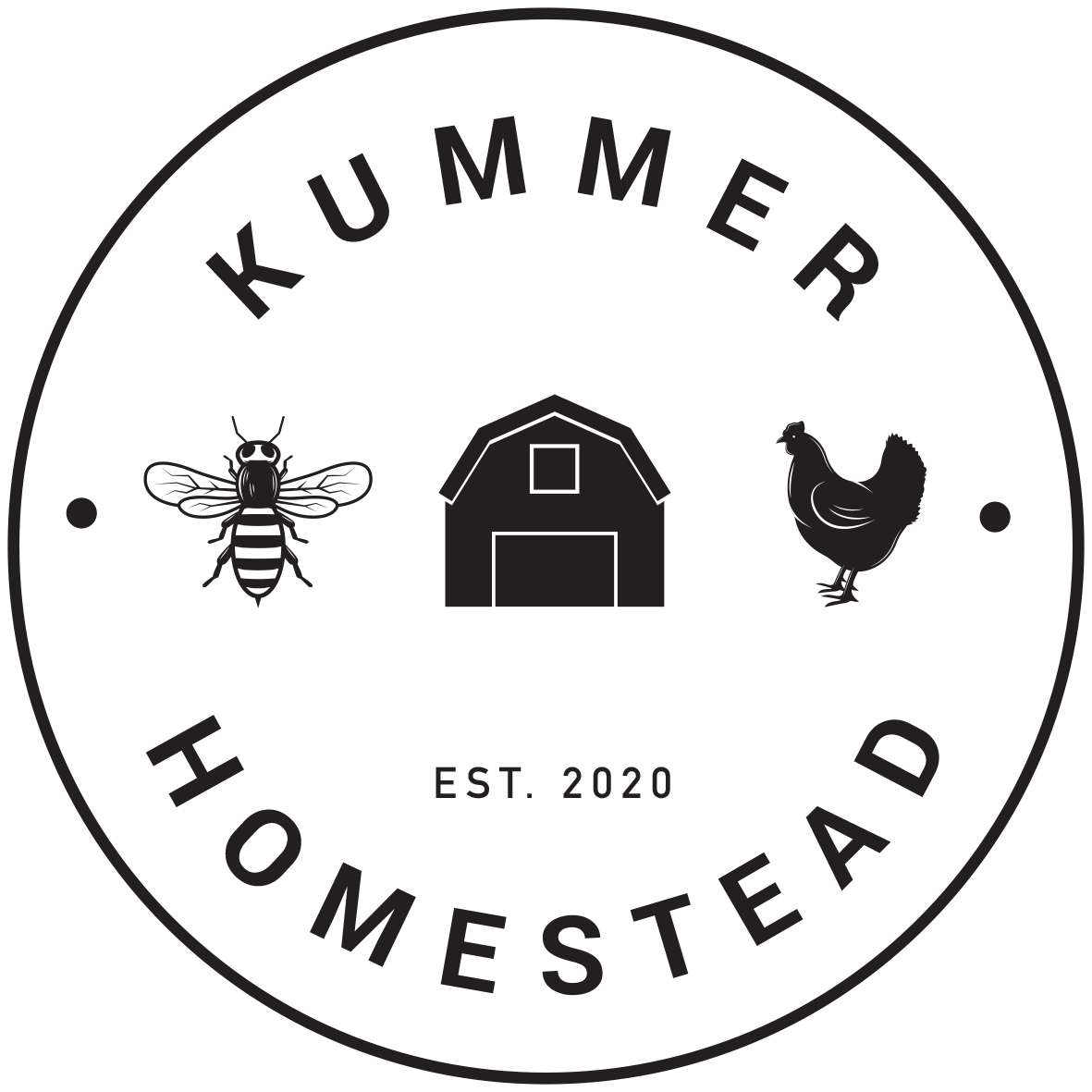Chicks are cheap, coops are simple, and nothing beats collecting fresh eggs in the morning for your breakfast omelet.
So it’s no wonder that “get some chickens” is the first advice most new homesteaders hear.
We took that exact route back in 2021, starting with a mixed flock of White Leghorns, Cinnamon Queens and Rhode Island Reds.
I still remember how excited we all were when we picked up the day-old chicks from the post office and transferred them into the brooder we had built a few weeks earlier. From making sure the chicks had a full feeder and fresh water to cleaning “pasty butts,” the entire family was all-in.
And we couldn’t wait to stop buying eggs from the grocery store.
Within weeks, the birds had names, a predator-proof coop, and a steady diet of kitchen scraps — plus the high-quality, organic, low-PUFA, corn and soy-free feed we still rely on today.
At that time, homesteading was more of a hobby than a means to sustainably raise food for our family. But over the ensuing years, the idea of being more independent and self-sufficient became an integral part of our lifestyle.
This led us to think more critically about how we raise livestock. And as part of that, we realized that chickens might not be the ideal option, considering their heavy reliance on imported grains.
I’ll talk about why that is throughout this article.
But first, here are a few reasons why we still chose not to abandon chickens altogether:
- They’re fun and hassle-free to raise, especially when grains are readily available.
- They enable us to improve our management skills, reducing our reliance on imported grains (e.g., supplementing their feed with milk, whey, and other feedstuffs that don’t rely on external inputs).
- Imported grains turn into fertilizer (through chicken manure), which improves soil fertility and pasture quality for ruminant animals such as cows, sheep and goats.
- They facilitate experiments with different breeds and feed options (e.g., zero grains) to learn more about raising chickens sustainably.
Based on everything we’ve learned over the past few years, I do believe that it’s possible to raise egg layers and broilers in a more sustainable way that most homesteaders realize.
But it takes a lot of experimentation, and you’ll likely end up with fewer eggs and skinnier chickens than you might like.
We’re willing to embark on this experiment to see what’s possible, but I’m fully aware that ruminants and/or monogastric animals — which can thrive without grains (e.g., geese or certain breeds of pigs) — are likely the better choice for regenerative, sustainable homesteads.
With that out of the way, let’s discuss in more detail why most chicken breeds are not the best choice if sustainability and self-reliance are your top priorities.
Performance Birds vs. Feed Flexibility
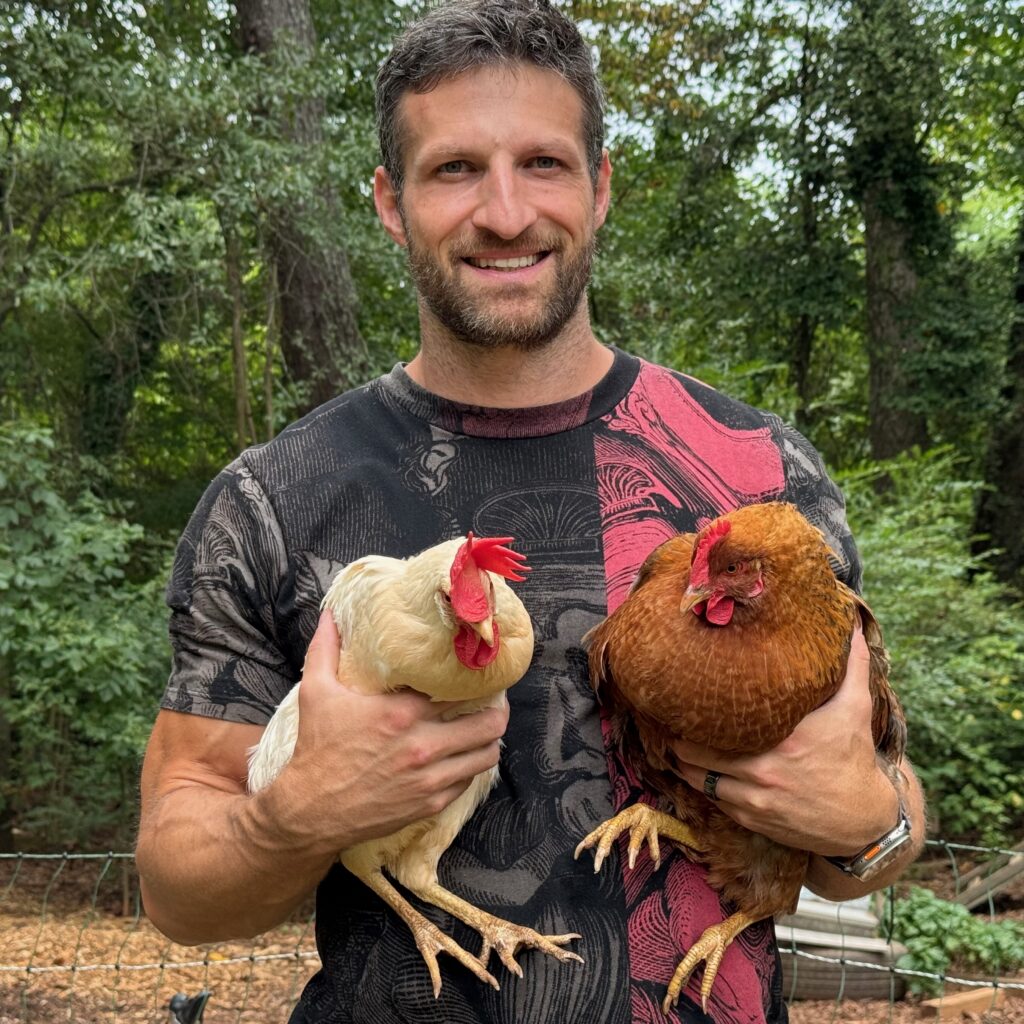
High-performance hybrids, such as Cornish Cross broilers and White Leghorn layers, dominate the efficiency charts. But only when the feeder never runs dry. Skip grain for a few days, and they stall out.
In contrast, heritage breeds — like Delaware, Barred Rock and Australorp — will keep scratching for bugs if the bin is empty. But that resilience comes at the cost of lower top-end production.
If you need a refresher on why we swore off Cornish Cross, see our deep dive “Why You Should Stop Raising Cornish Cross Chickens for Meat.”
The High Cost of Chicken Feed
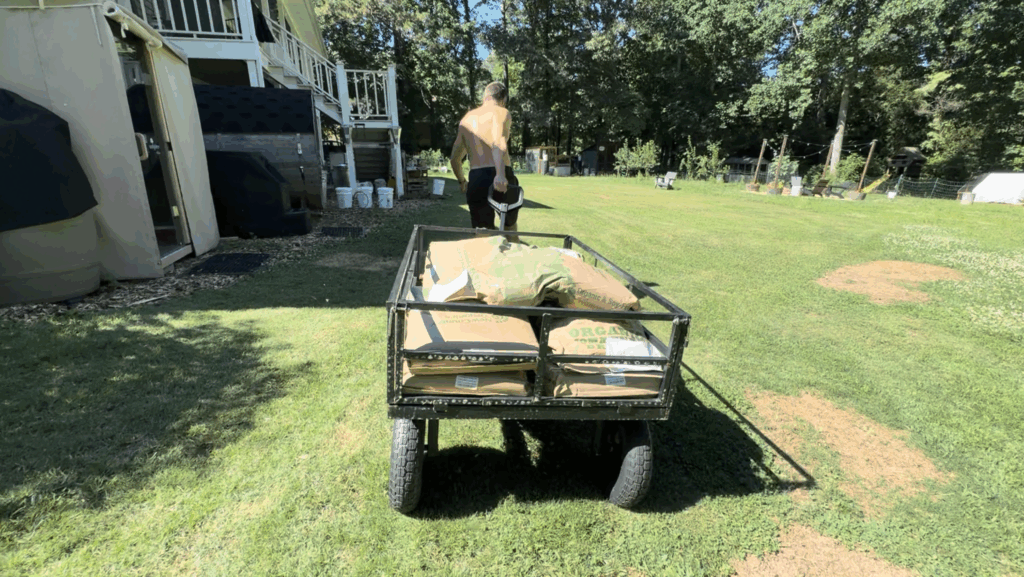
We usually purchase chicken feed in 1,000 or 2,000-pound totes, delivered on pallets by a truck.
Since we’re not commercial farmers, we haven’t traditionally paid much attention to feed costs. But I did the math the other day and concluded that we go through 260-280 pounds of feed each month.
With a price per pound of almost $1, that means we pay approximately $260 for 600 eggs a month (or $5.60 per dozen eggs).
Of course, that figure only accounts for the cost of feed — not our labor and time, nor the chickens’ shelter, water and feed supplements (e.g., grit and a source of calcium).
When you take those factors into account, producing eggs in this manner makes almost no sense from a financial perspective.
The same is true for meat production, with our slower-growing broilers costing us approximately $26 per bird just in feed cost.
Yes, we use organic, corn/soy-free and low-PUFA feed, which is the most expensive type of feed on the market. Our costs would be significantly lower if we used lower-quality feed, but doing so would undermine our goal of producing the highest-quality food possible.
If you compare this to the relative cost of feed involved in raising ruminants, you’ll realize that it’s less expensive and more sustainable — especially if you have enough pasture and you practice management-intensive grazing to improve your soil and pasture quality.
Depending on where you live and how much land you have, it’s feasible to feed ruminants with fresh pasture (and a little bit of hay) year-round, without having to import feed.
The Risk of Relying on Grain
Depending on imported grain means you’re tethered to global commodity markets. If those markets hiccup, your flock hiccups too; egg counts stumble, meat birds stall out, and your feed bill balloons overnight.
Of course, this probably isn’t a serious problem if you’re raising a few dozen chickens for your own consumption.
Still, it can lead to severe financial strain on even a small-scale commercial poultry operation (like selling your excess eggs), especially if you raise pastured chickens on high-quality feed, as those birds are already quite expensive. Consumers are only willing to pay so much for better eggs or chicken meat.
Our homestead isn’t our primary source of income (even though it’s an integral part of our lifestyle). Instead, we homestead because we want to raise the healthiest food possible and are willing to spend some more money on feed than what would be fiscally reasonable in a commercial poultry operation.
More importantly, we’re constantly striving to reduce our reliance on grains in favor of products we can produce on the farm. That’s one of the reasons we’re considering adding dairy cows and growing certain plants (e.g., wheat, rye, oats, sunflowers) — so that we can feed excess milk and seeds/grains to pigs and chickens.
When Grain Becomes a Soil Amendment
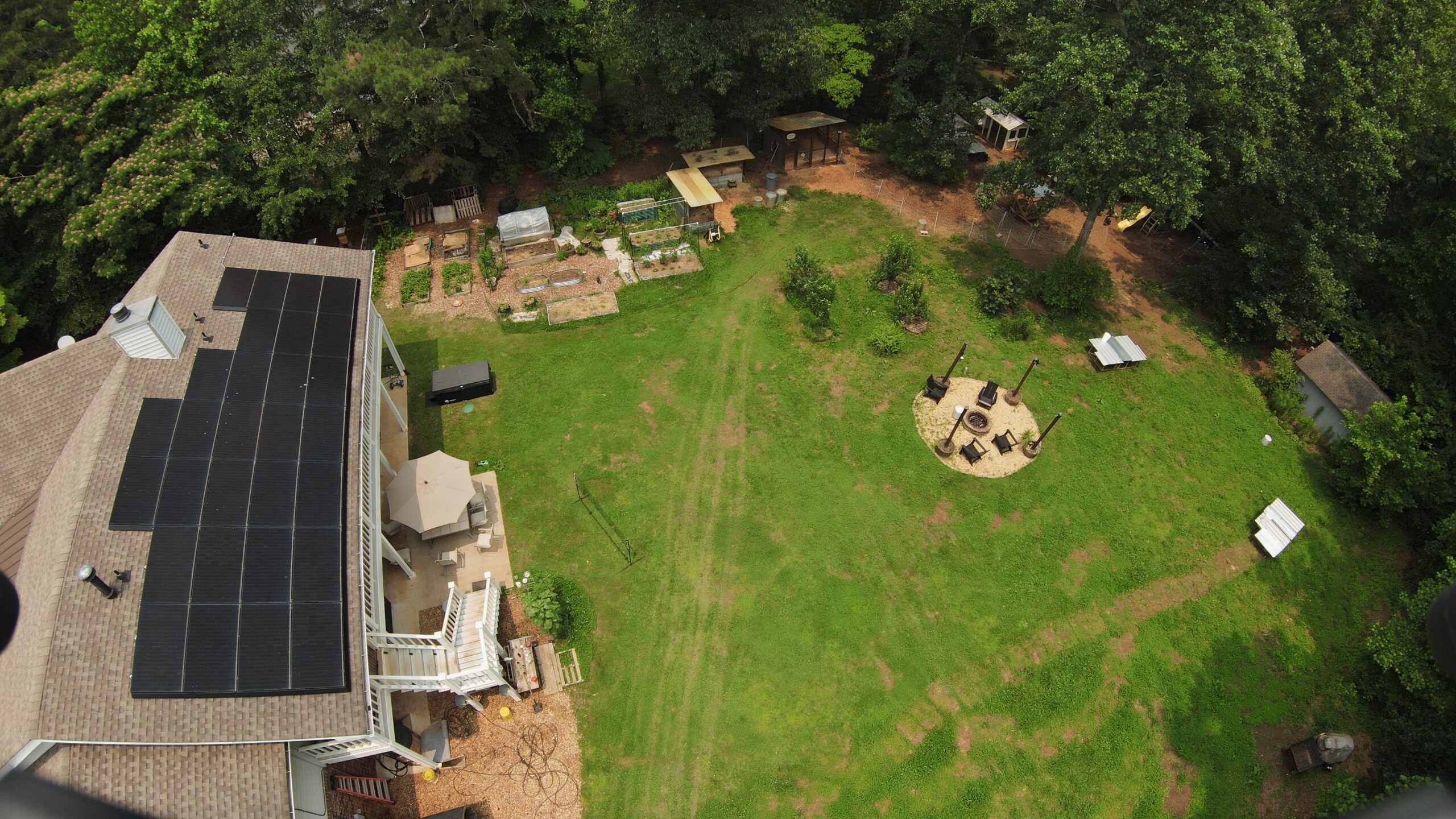
What many homesteaders don’t understand is that you cannot improve soil fertility without importing nutrients.
In other words, cow manure deposited on the very pasture the cow grazed on won’t add nutrients to the soil because those nutrients had to come from somewhere in the first place.
Without chickens, one way to improve soil fertility in a cow operation is to feed them purchased hay (or hay you obtained from another one of your fields). The hay is what imports the nutrients, and the cows then convert them into manure that the soil can absorb.
Another way to improve soil fertility is to run chickens behind cows (in a rotational grazing setup). In this case, the chickens turn imported grains into fertilizer that they’ll work into the soil. By doing so for a few years, you can dramatically improve soil fertility, which benefits both your ruminant and monogastric livestock (making you less reliant on imported grains and allowing you to produce more food from grass, rain and sunshine).
We don’t have cattle or sheep on our current 1.26-acre homestead, but we apply the same principle with rabbits, which benefit from the improved pasture quality when we rotate them daily using mobile rabbit tractors.
Five Ways We Slash Our Feed Bill (Without Starving the Flock)


As I mentioned in the previous segment, we don’t have ruminant animals on our current land due to size limitations. However, over the years, we’ve implemented several methods to reduce our reliance on grains, and to reduce how much money we spend on chicken feed without negatively impacting the performance of our birds.
Below are the six strategies that delivered the most significant savings with the least extra effort.
What we do today:
- Recycle raw animal protein. Every raw deer rib cage, fish head, and whatever leftovers the dog doesn’t eat, goes straight to the flock. The birds strip each frame clean, converting waste into high‑quality amino acids.
- Use pasture for protein. We over-seed chicken paddocks with white clover, winter wheat, and rye to pump up crude protein while fixing nitrogen into the soil.
- Give them room to hunt. With fresh grass available daily, the hens hunt crickets, beetles and earthworms, adding free micronutrients and cutting the feed bill.
- Use fermented grain in winter. A 24‑48‑hour soak increases bioavailability, and the birds eat about 10% less compared to dry scratch. (Low temperatures make controlling the fermentation easier. In summer, feed ferments so quickly that it can turn into alcohol or grow mold, which isn’t ideal for the birds.)
- Use a spill‑proof feeder upgrade (e.g., CoopWorx) to cut waste even further.
- Cull on declining lay. After two or three strong seasons, we turn older hens into nutrient‑dense stock for soup, saving ~90 pounds of feed per hen per year.
Next on our experiment list:
- We plan on leveraging dairy cows or sheep to produce enough milk to feed the leftovers to pigs and chickens.
- As we move on to slaughtering larger animals, we have larger carcasses to feed to our chickens.
- More geese, fewer chickens. Geese are excellent at converting plants into protein. That’s why we’re considering raising more geese than chickens for meat.
- Since we’ll have 45 acres on our new property, we plan on growing plants (e.g., amaranth, sorghum, and field peas) specifically for chicken feed.
Implementing even two or three of those strategies should meaningfully reduce our reliance on grains.
Decision Matrix: Do Chickens Fit Your Homestead?
You can use the table below to help you decide whether or not chickens are the best livestock for your homestead.
| Scenario | Verdict | Why |
|---|---|---|
| Less than 2 acres, no ruminants | Maybe | You’ll buy 100% of the feed; manure can overload a small space. |
| 5+ acres with cattle/sheep rotation | Yes | Birds close the nutrient loop and knock down parasites. |
| 100% self-sufficient homestead or prepping | Probably not | I recommend sticking with ruminants, pigs or rabbits, because they’re more likely to thrive on food you can easily produce on your homestead. |
Final Thoughts
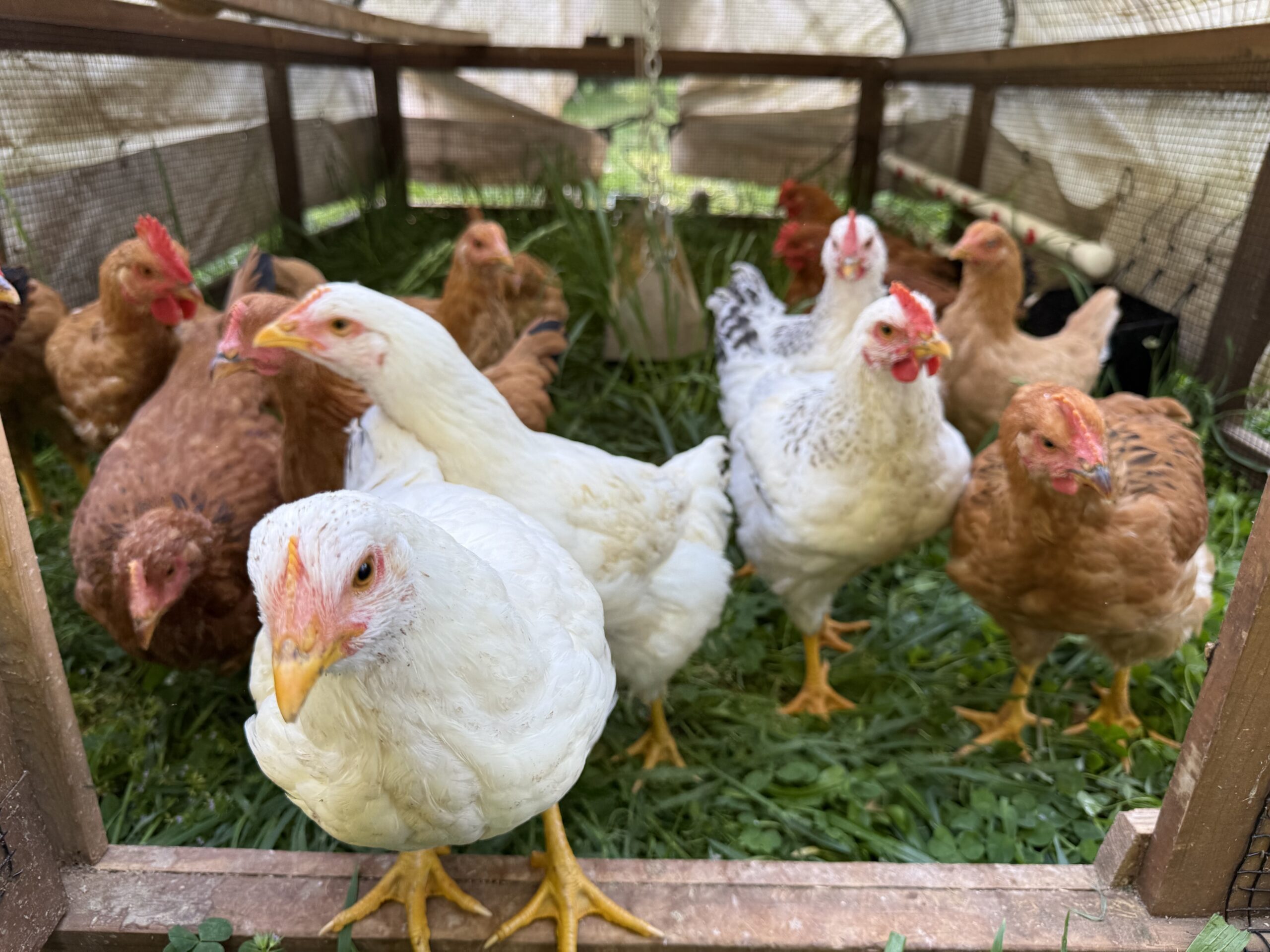
I love the dawn chorus of our layers and the unbeatable flavor of a roasted chicken — but let’s not kid ourselves: chickens are imported calories in feathered form.
If the feed truck stops tomorrow, a Cornish Cross becomes lawn decor and a Leghorn turns from egg machine to sporadic layer.
Design your system so every pound of grain that does cross the gate stays on-site as improved soil fertility. Pair birds with ruminants, diversify their diet, and cull ruthlessly. Do that, and chickens can still earn their keep on a regenerative, resilient homestead.
Now I’d like to hear from you! Do you consider chickens a must-have on a self-sufficient homestead? Let me know in the comments!

Michael Kummer is a healthy living enthusiast, the founder of MK Supplements and the host of the Primal Shift podcast. His goal is to help people achieve optimal health by bridging the gap between ancestral living and the demands of modern society. He runs the Kummer Homestead with his wife Kathy and their two children.

